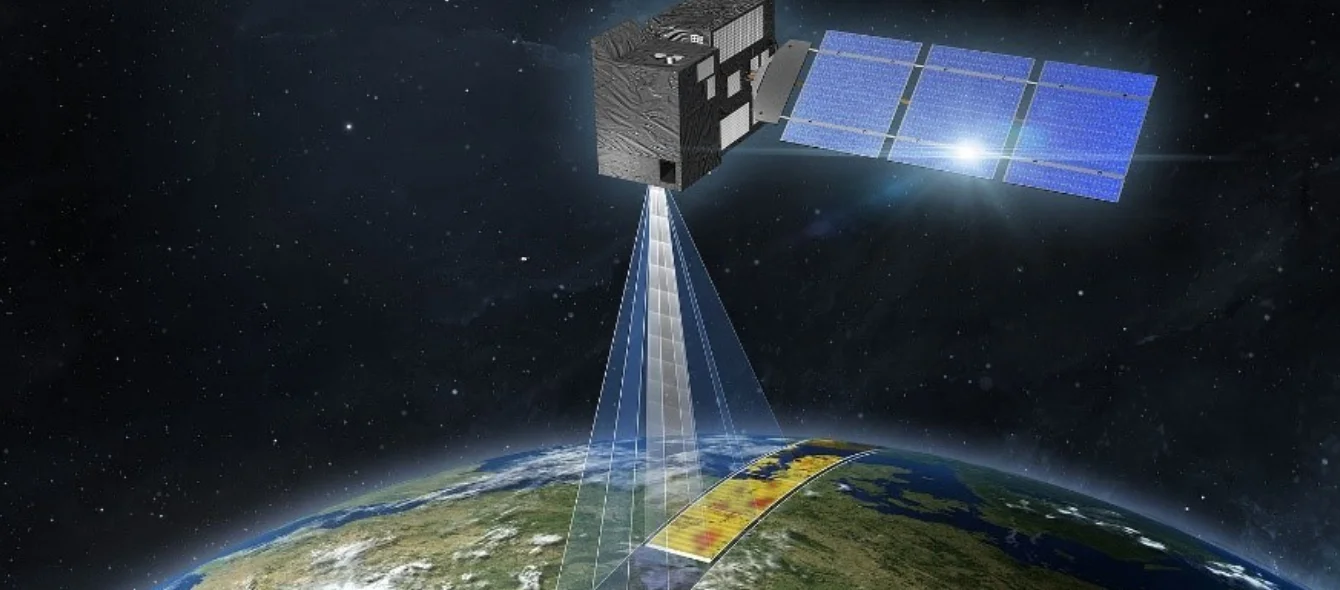ESA has been supporting the European earth observation programme Copernicus with satellite systems from the ‘Sentinel’ series since 2014. Now, the European Space Agency’s (ESA) ‘watchdogs’ will be getting a new helping hand.
One of the new systems bound for outer space in 2025 is CO2M (the M stands for monitoring), which will measure and localise greenhouse gases in the atmosphere. CO2M will help document the geographical origin of man-made emissions more accurately than is currently possible.
Understanding the Earth with Copernicus
According to ESA, Copernicus is the world’s biggest provider of Earth observation data. The researchers rely on numerous measuring stations on Earth and in space to collect information on our planet’s vital signs and subsequent changes.
The Copernicus Programme (in German)
In this way, they not only document data on ocean and air currents, land use, vegetation, temperatures, precipitation and air quality, but they also use remote sensing data for crisis and natural disaster management. By 2025, the Sentinel network will have expanded its fleet with three additional systems (Sentinel 4 to 6), which are to carry six ‘high-priority’ missions on board. These missions will be dedicated to more accurate measurements of ocean temperatures, snow and ice-covered areas, and man-made greenhouse gas emissions, to name but a few.
More accurate allocation of emissions
Although it is also possible to measure total carbon dioxide in the atmosphere from the Earth, researchers are only able to determine the origin of changes with the help of measurements from space. This is why NASA, for example, launched the ‘Orbiting Carbon Observatory’ (OCO) in 2013. “It’s great at measuring the regional distribution of carbon dioxide, but it struggles when conditions are cloudy, and it also has limited temporal resolution,” explains Georg Feulner from the Potsdam Institute for Climate Impact Research in the Tagesspiegel Background.
CO2 watchdog from outer space
The ESA and EU hope CO2M will bridge this gap. The system will use infrared spectral analysis to detect CO2 as well as nitrogen dioxide, methane and other greenhouse gases. CO2M is able to map larger areas at a lower resolution and at a higher frequency than OCO. This would make it easier to detect changes over time and identify day-dependent phenomena, said Frank te Hennepe, Head of the Department for Earth Observation Predevelopment at technology company OHB, in the Tagesspiegel Background. OHB has supplied numerous Sentinel systems and has also been contracted to construct CO2M.
Independent of other measurements
‘CO2M’ aims to measure the emissions of individual countries, regions – and even cities – in order to document man-made greenhouse gas emissions. In turn, this will help ensure that the objectives of the Paris Agreement are being followed and adhered to.
Another benefit: the project gives European partners of the Copernicus programme access to independent greenhouse gas measurements without having to rely on the satellites of other countries. As with all Copernicus programmes, the data collected by CO2M will be accessible to everyone at all times.
